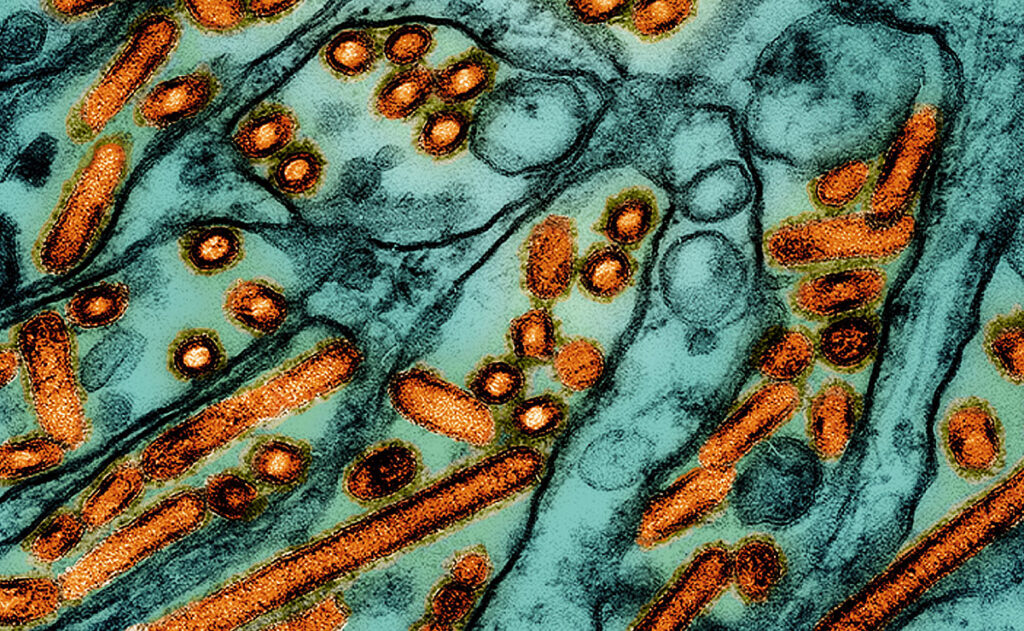The escalating threat posed by highly pathogenic H5N1 avian influenza viruses—now entrenched in U.S. dairy cattle, poultry, and wildlife—has catalyzed urgent efforts to develop effective countermeasures. In a newly published study in the Journal of Virology, researchers from Duke University report promising preclinical results from novel DNA and mRNA-lipid nanoparticle (mRNA-LNP) vaccines that target a human-infecting strain of H5N1 influenza (A/Texas/37/2024). These next-generation vaccines, developed with support from the National Institute of Allergy and Infectious Diseases (NIAID), offer a powerful and scalable strategy for pandemic preparedness.
Rising Threat from Zoonotic Influenza
Since early 2024, clade 2.3.4.4b H5N1 viruses have been spreading across at least 17 U.S. states, affecting over 950 dairy herds and multiple poultry flocks. Milk production losses, viral shedding in milk, and confirmed zoonotic infections—including a fatal case in Louisiana—have elevated concerns. While most human infections have been linked to direct animal contact, several have occurred without any known exposure, suggesting possible environmental or foodborne transmission routes. These developments mark a significant evolutionary shift in H5N1’s behavior and amplify the risk of a future influenza pandemic.
Dual-Antigen Vaccine Design: HA and NA in One Platform
A key innovation in the study was the dual-antigen design of the vaccines. Rather than focusing solely on hemagglutinin (HA)—the standard target for influenza vaccines—the researchers incorporated neuraminidase (NA), a viral surface protein increasingly recognized for its role in mitigating disease severity and reducing transmission.
The team engineered both DNA and mRNA-based vaccine constructs that encode HA and NA from the A/Texas/37/2024 H5N1 strain within a single open reading frame. This compact genetic configuration enables the efficient co-expression of both antigens from a single molecule, simplifying production and improving immunogenicity.
Robust Protection in Preclinical Models
In mouse models, both DNA and mRNA-LNP versions of the vaccine elicited strong antibody responses that effectively neutralized the virus. Upon challenge with a lethal dose of H5N1, vaccinated mice were fully protected from weight loss, clinical disease, and death. Lung viral loads were undetectable in most vaccinated animals, and key markers of inflammation—CXCL-10, IFN-β, and TNF-α—were significantly reduced.
The DNA vaccine also demonstrated protective potential in animals and could be an important tool for livestock vaccination, especially given its thermal stability, cost-effectiveness, and production scalability.
Implications for Public Health and National Security
The findings underscore the real and growing threat that zoonotic H5N1 influenza poses to public health, agriculture, and national security. With human-to-human transmission not yet documented but increasingly plausible, vaccines that can be rapidly deployed to both animals and humans could decisively blunt the emergence of a pandemic.
Containing H5N1 at its source—in cattle and poultry—reduces the risk of broader outbreaks and preserves food system stability. A coordinated vaccination strategy that spans both human and animal health aligns with the principles of One Health and is in the national interest, especially amid heightened biosecurity concerns.
A Versatile and Scalable Platform
The study’s use of generic LNP formulations for the mRNA vaccine ensures that the platform is not tied to proprietary manufacturing pipelines, enhancing global adaptability. The lipid components are GMP-compatible and suitable for mass production, improving readiness for real-time outbreak response.
This work builds on the proven success of mRNA-LNP technology during the COVID-19 pandemic and positions it as a central pillar in future influenza preparedness. Unlike traditional flu vaccines, which can take months to produce, mRNA vaccines can be adapted and manufactured quickly in response to emerging strains.
Looking Ahead: From Bench to Field
While these findings are promising, further work is needed to validate the results in ferret models and eventually in humans. The durability of the immune response and cross-protection against diverse H5N1 variants also remain critical areas for future investigation.
Still, the dual-antigen approach provides a blueprint for building more comprehensive and responsive influenza vaccines—tools that are urgently needed in an era of accelerating zoonotic threats.
Leonard, R.A., Spurrier, M.A., Skavicus, S., et al. (2025). Development of DNA and mRNA-LNP vaccines against an H5N1 clade 2.3.4.4b influenza virus. Journal of Virology. 16 July 2025.


